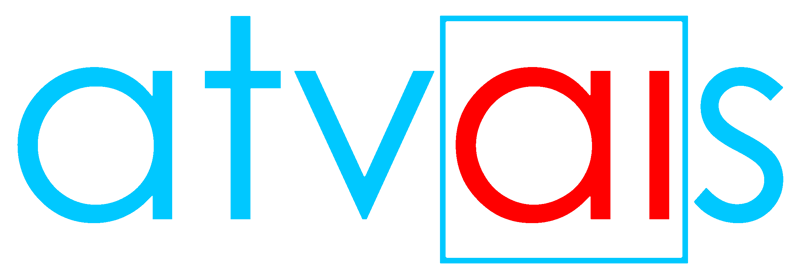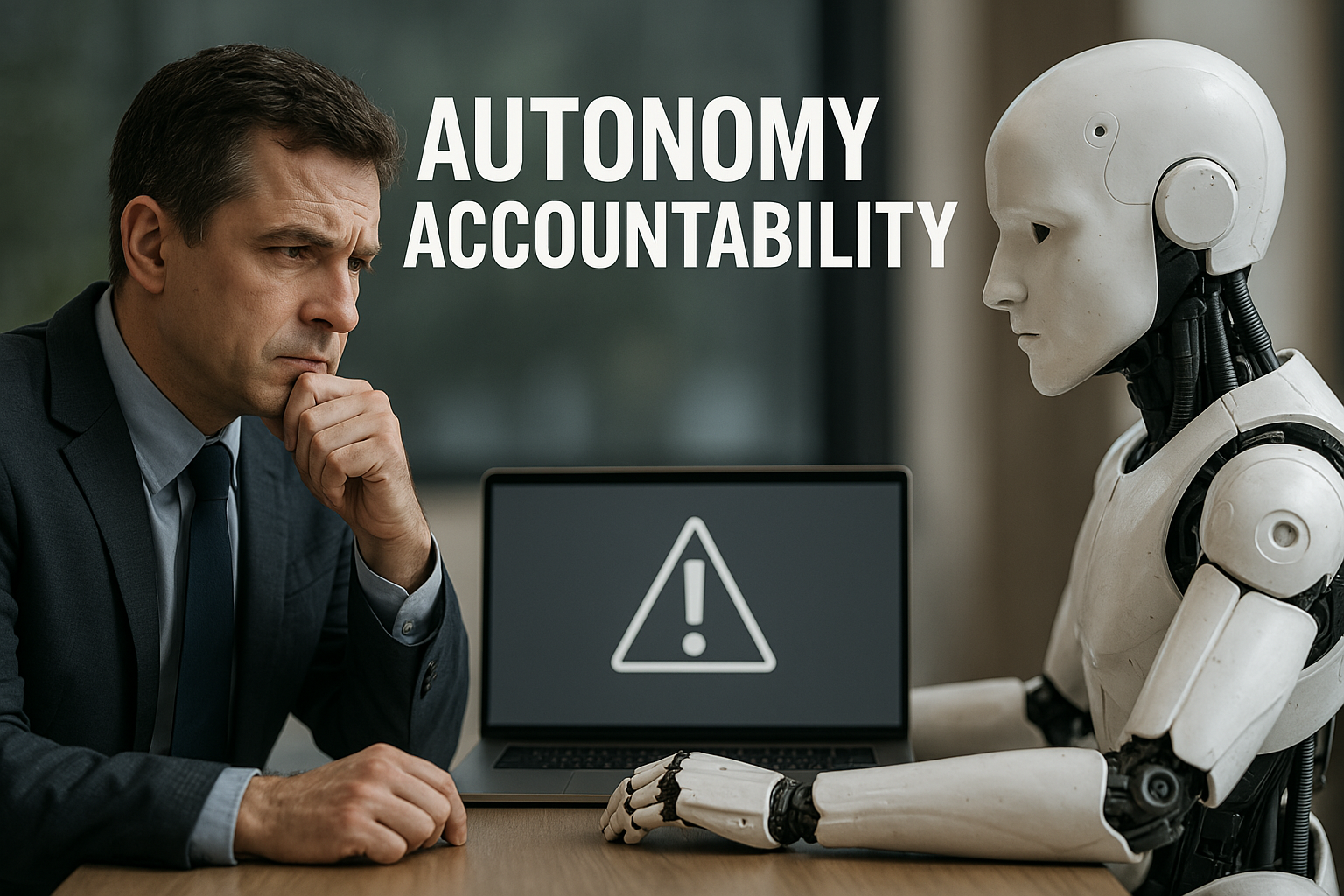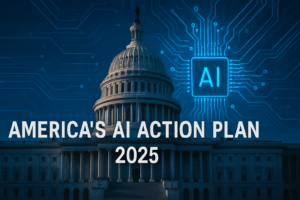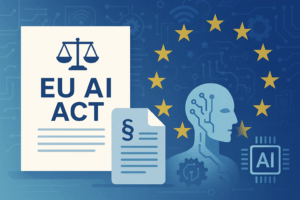AI systems today are making decisions that humans used to handle exclusively—from medical diagnoses to financial assessments and logistics management. Yet, despite their increasing autonomy, when something goes wrong, the question remains: who is responsible? This contradiction lies at the heart of the Autonomy Accountability Paradox, where human actors are legally and ethically responsible for decisions made by AI systems they may not fully control.
In our previous article, we explored the Transparency Paradox. Now, we turn to the growing disconnect between control and accountability—a tension central to the future of AI governance.
Understanding the Autonomy Accountability Paradox
AI systems are designed to reduce the need for constant human oversight. As they become more advanced, they’re entrusted with making complex, real-time decisions in environments ranging from hospitals to supply chains. However, laws and public expectations still place responsibility squarely on the shoulders of humans.
This paradox emerges when the level of autonomy an AI system has is no longer matched by the level of human oversight. For example, an internal AI may misclassify data or prioritize incorrect outputs, leading to business or safety risks. Even though the decision was made autonomously, the human operator—or the company—is still accountable.
A well-known example is AI-assisted decision support in healthcare. If an AI recommends a treatment that turns out to be harmful, the medical professional who relied on it remains liable, even if they lacked the technical ability to challenge the AI’s output. This paradox creates uncertainty, legal exposure, and ethical dilemmas that governance frameworks must address directly.
Why the Paradox Matters in Governance
Governance frameworks depend on clear lines of accountability. If no one is clearly responsible, compliance collapses. Legal systems require a human or legal entity to be at fault. But AI challenges this, especially when it operates semi-independently or generates outputs that are difficult to trace or explain.
As AI becomes more embedded in decision-making, the chain of responsibility weakens. Engineers build the systems, business leaders deploy them, and operators monitor them—but none may have the full picture. The more AI “thinks” on its own, the harder it becomes to say who was in control when a bad outcome occurred.
Public perception adds another layer of complexity. People often blame “the AI” when something goes wrong. But under current legal structures, AI is not a legal person. The result is pressure to hold humans accountable for errors they may not have fully understood or foreseen.
Legal and Ethical Tensions in AI Decision-Making
There is no legal framework today that recognizes AI as an independent legal entity. This means all responsibility reverts to the individuals and organizations that design, deploy, or rely on these systems.
In shared decision-making environments—like a financial service platform that combines AI scoring with human input—fault becomes hard to assign. If the human decision-maker is relying on an AI’s opaque recommendation, were they really in control?
Another challenge is posed by so-called “black box” systems. These are models whose internal logic is too complex or opaque to interpret. When AI outcomes are not fully explainable, justifying decisions becomes almost impossible, making auditability and legal defensibility difficult.
These tensions show that simply adding AI into the decision process without restructuring responsibility models can lead to ethical gray zones and legal gaps. Governance must anticipate and address these conflicts, rather than treat them as edge cases.
Strategies to Navigate the Autonomy Accountability Paradox
To manage this paradox, organizations must draw clear boundaries between what AI systems are allowed to do and what decisions remain under human authority. This clarity must be reflected in both system design and internal governance documentation.
Effective strategies include:
- Defining thresholds where human intervention is mandatory
- Setting oversight protocols for high-impact or high-risk decisions
- Designing AI to support, not replace, human decision-making in sensitive areas
- Documenting decision flows to track responsibility across AI-human interactions
These measures not only improve auditability but also help clarify who is in charge when things go wrong. Governance frameworks should avoid ambiguous roles and make sure there are defined fallback mechanisms in the event of AI system failures.
What Regulators Expect Around Responsibility
Regulatory frameworks increasingly stress the need for human-in-the-loop or human-on-the-loop controls. This means either a person makes the final decision (in-the-loop) or oversees the AI’s operation and can intervene (on-the-loop).
For example, the EU AI Act mandates that for high-risk AI applications, users must be clearly informed that they are interacting with AI and that meaningful human oversight must be in place. Regulators are not only asking that someone be responsible—they want to see documentation of who is responsible and how that responsibility is managed.
Governance policies must therefore show that the organization has control over delegation, understands the risks involved, and can trace decisions back to accountable parties. These expectations are especially relevant in sectors like finance, healthcare, and public services, where high-impact decisions are common.
Designing AI Systems That Preserve Accountability
To effectively address the Autonomy Accountability Paradox, AI systems should be built with accountability in mind—not layered on later. This involves more than just software—it includes people, processes, and oversight mechanisms.
Some essential design elements include:
- Audit trails that track decision points and identify who (or what) made them
- Intervention triggers that stop AI execution when predefined risk levels are crossed
- Governance models that map accountability by role and system access
- Ethical reviews before deploying autonomous systems in critical areas
Embedding these features ensures that organizations don’t lose sight of who is responsible as AI systems grow more complex. It also allows regulators and auditors to trace outcomes back to human decisions, supporting both compliance and ethical integrity.
Conclusion
The Autonomy Accountability Paradox exposes a critical gap in how we govern intelligent systems. When humans are held responsible for actions they can no longer fully control, trust in both the technology and the system that deploys it begins to erode.
Organizations must recognize that this paradox cannot be resolved through technical improvements alone. Instead, governance must evolve to match the operational reality of AI. This means assigning clear roles, defining intervention points, and ensuring that human accountability is never an afterthought.
As we continue exploring the paradoxes of AI governance—including the Transparency Paradox and the tension between innovation and regulation—it becomes clear that modern governance requires more than compliance. It demands foresight, structural clarity, and the willingness to rethink how decisions are made and owned in a world of intelligent machines.






